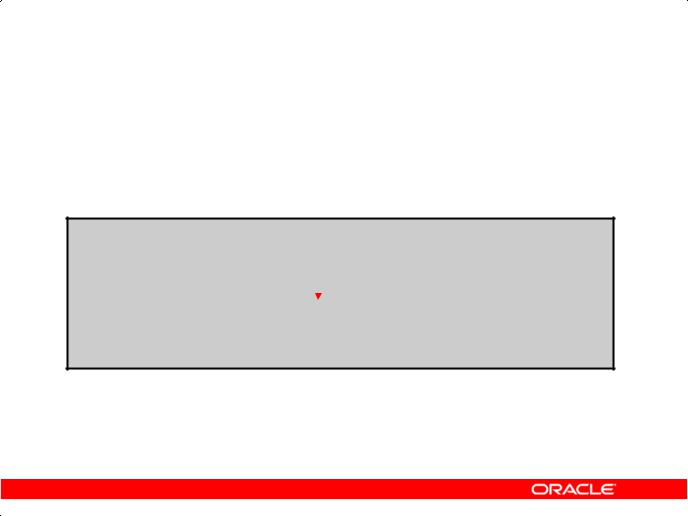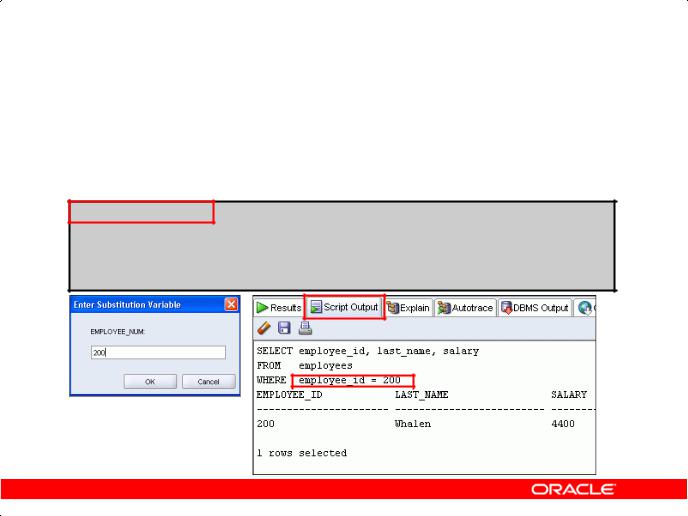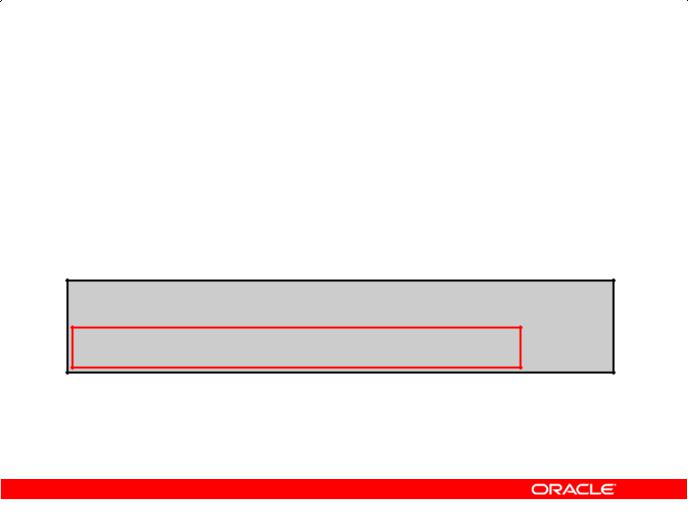
- •Preface
- •Introduction
- •Lesson Objectives
- •Lesson Agenda
- •Course Objectives
- •Course Agenda
- •Appendixes Used in the Course
- •Lesson Agenda
- •Oracle Database 11g: Focus Areas
- •Oracle Database 11g
- •Oracle Fusion Middleware
- •Oracle Enterprise Manager Grid Control 10g
- •Oracle BI Publisher
- •Lesson Agenda
- •Relational and Object Relational Database Management Systems
- •Data Storage on Different Media
- •Relational Database Concept
- •Definition of a Relational Database
- •Data Models
- •Entity Relationship Model
- •Relating Multiple Tables
- •Relational Database Terminology
- •Lesson Agenda
- •Using SQL to Query Your Database
- •SQL Statements
- •Development Environments for SQL
- •Lesson Agenda
- •The Human Resources (HR) Schema
- •Tables Used in the Course
- •Lesson Agenda
- •Oracle Database 11g Documentation
- •Additional Resources
- •Summary
- •Practice I: Overview
- •Objectives
- •Lesson Agenda
- •Capabilities of SQL SELECT Statements
- •Basic SELECT Statement
- •Selecting All Columns
- •Selecting Specific Columns
- •Writing SQL Statements
- •Column Heading Defaults
- •Lesson Agenda
- •Arithmetic Expressions
- •Using Arithmetic Operators
- •Operator Precedence
- •Defining a Null Value
- •Null Values in Arithmetic Expressions
- •Lesson Agenda
- •Defining a Column Alias
- •Using Column Aliases
- •Lesson Agenda
- •Concatenation Operator
- •Literal Character Strings
- •Using Literal Character Strings
- •Alternative Quote (q) Operator
- •Duplicate Rows
- •Lesson Agenda
- •Displaying the Table Structure
- •Using the DESCRIBE Command
- •Quiz
- •Summary
- •Practice 1: Overview
- •Objectives
- •Lesson Agenda
- •Limiting Rows Using a Selection
- •Limiting the Rows That Are Selected
- •Using the WHERE Clause
- •Character Strings and Dates
- •Comparison Operators
- •Using Comparison Operators
- •Range Conditions Using the BETWEEN Operator
- •Membership Condition Using the IN Operator
- •Pattern Matching Using the LIKE Operator
- •Combining Wildcard Characters
- •Using the NULL Conditions
- •Defining Conditions Using the Logical Operators
- •Using the AND Operator
- •Using the OR Operator
- •Using the NOT Operator
- •Lesson Agenda
- •Rules of Precedence
- •Lesson Agenda
- •Using the ORDER BY Clause
- •Sorting
- •Lesson Agenda
- •Substitution Variables
- •Using the Single-Ampersand Substitution Variable
- •Character and Date Values with Substitution Variables
- •Specifying Column Names, Expressions, and Text
- •Using the Double-Ampersand Substitution Variable
- •Lesson Agenda
- •Using the DEFINE Command
- •Using the VERIFY Command
- •Quiz
- •Summary
- •Practice 2: Overview
- •Objectives
- •Lesson Agenda
- •SQL Functions
- •Two Types of SQL Functions
- •Single-Row Functions
- •Lesson Agenda
- •Character Functions
- •Case-Conversion Functions
- •Using Case-Conversion Functions
- •Character-Manipulation Functions
- •Using the Character-Manipulation Functions
- •Lesson Agenda
- •Number Functions
- •Using the ROUND Function
- •Using the TRUNC Function
- •Using the MOD Function
- •Lesson Agenda
- •Working with Dates
- •RR Date Format
- •Using the SYSDATE Function
- •Arithmetic with Dates
- •Using Arithmetic Operators with Dates
- •Lesson Agenda
- •Date-Manipulation Functions
- •Using Date Functions
- •Using ROUND and TRUNC Functions with Dates
- •Quiz
- •Summary
- •Practice 3: Overview
- •Objectives
- •Lesson Agenda
- •Conversion Functions
- •Implicit Data Type Conversion
- •Explicit Data Type Conversion
- •Lesson Agenda
- •Using the TO_CHAR Function with Dates
- •Elements of the Date Format Model
- •Using the TO_CHAR Function with Dates
- •Using the TO_CHAR Function with Numbers
- •Using the TO_NUMBER and TO_DATE Functions
- •Using the TO_CHAR and TO_DATE Function with RR Date Format
- •Lesson Agenda
- •Nesting Functions
- •Lesson Agenda
- •General Functions
- •NVL Function
- •Using the NVL Function
- •Using the NVL2 Function
- •Using the NULLIF Function
- •Using the COALESCE Function
- •Lesson Agenda
- •Conditional Expressions
- •CASE Expression
- •Using the CASE Expression
- •DECODE Function
- •Using the DECODE Function
- •Quiz
- •Summary
- •Practice 4: Overview
- •Objectives
- •Lesson Agenda
- •What Are Group Functions?
- •Types of Group Functions
- •Group Functions: Syntax
- •Using the AVG and SUM Functions
- •Using the MIN and MAX Functions
- •Using the COUNT Function
- •Using the DISTINCT Keyword
- •Group Functions and Null Values
- •Lesson Agenda
- •Creating Groups of Data
- •Creating Groups of Data: GROUP BY Clause Syntax
- •Using the GROUP BY Clause
- •Grouping by More than One Column
- •Using the GROUP BY Clause on Multiple Columns
- •Illegal Queries Using Group Functions
- •Restricting Group Results
- •Restricting Group Results with the HAVING Clause
- •Using the HAVING Clause
- •Lesson Agenda
- •Nesting Group Functions
- •Quiz
- •Summary
- •Practice 5: Overview
- •Objectives
- •Lesson Agenda
- •Types of Joins
- •Joining Tables Using SQL:1999 Syntax
- •Qualifying Ambiguous Column Names
- •Lesson Agenda
- •Creating Natural Joins
- •Retrieving Records with Natural Joins
- •Creating Joins with the USING Clause
- •Joining Column Names
- •Retrieving Records with the USING Clause
- •Using Table Aliases with the USING Clause
- •Creating Joins with the ON Clause
- •Retrieving Records with the ON Clause
- •Creating Three-Way Joins with the ON Clause
- •Applying Additional Conditions to a Join
- •Lesson Agenda
- •Joining a Table to Itself
- •Self-Joins Using the ON Clause
- •Lesson Agenda
- •Nonequijoins
- •Retrieving Records with Nonequijoins
- •Lesson Agenda
- •INNER Versus OUTER Joins
- •LEFT OUTER JOIN
- •RIGHT OUTER JOIN
- •FULL OUTER JOIN
- •Lesson Agenda
- •Cartesian Products
- •Generating a Cartesian Product
- •Creating Cross Joins
- •Quiz
- •Summary
- •Practice 6: Overview
- •Objectives
- •Lesson Agenda
- •Using a Subquery to Solve a Problem
- •Subquery Syntax
- •Using a Subquery
- •Guidelines for Using Subqueries
- •Types of Subqueries
- •Lesson Agenda
- •Single-Row Subqueries
- •Executing Single-Row Subqueries
- •Using Group Functions in a Subquery
- •The HAVING Clause with Subqueries
- •What Is Wrong with This Statement?
- •No Rows Returned by the Inner Query
- •Lesson Agenda
- •Multiple-Row Subqueries
- •Lesson Agenda
- •Null Values in a Subquery
- •Quiz
- •Summary
- •Practice 7: Overview
- •Objectives
- •Lesson Agenda
- •Set Operators
- •Set Operator Guidelines
- •The Oracle Server and Set Operators
- •Lesson Agenda
- •Tables Used in This Lesson
- •Lesson Agenda
- •UNION Operator
- •Using the UNION Operator
- •UNION ALL Operator
- •Using the UNION ALL Operator
- •Lesson Agenda
- •INTERSECT Operator
- •Using the INTERSECT Operator
- •Lesson Agenda
- •MINUS Operator
- •Using the MINUS Operator
- •Lesson Agenda
- •Matching the SELECT Statements
- •Matching the SELECT Statement: Example
- •Lesson Agenda
- •Using the ORDER BY Clause in Set Operations
- •Quiz
- •Summary
- •Practice 8: Overview

Using the DEFINE Command
•Use the DEFINE command to create and assign a value to a variable.
•Use the UNDEFINE command to remove a variable.
DEFINE |
employee_num |
= |
200 |
|
|
|||
|
|
|
|
|
|
|
|
|
SELECT |
employee_id, last |
|
_name, salary, department_id |
|||||
FROM |
employees |
|
|
|
||||
|
||||||||
WHERE |
employee_id = |
|
&employee_num |
; |
||||
UNDEFINE employee_num
Academy The example shown creates a substitution variableOraclefor an emp oy number by using the DEFINE
command. At run time, this displays the employee number, name, salary, and department number for
Because the variable is created using the SQL Developer DEFINE command, the user is not
prompted to enter a value for the employee number. Instead, the defined variable value is |
|
automatically substituted in the SELECT statement.& |
|
Internal |
|
The EMPLOYEE_NUM substitution v ri ble is presentOnlyin the session until the user undefines it or |
|
exits the SQL Developer session. |
Use |
|
|
Oracle |
|
Oracle Database 11g: SQL Fundamentals I 2 - 35

Using the VERIFY Command
Use the VERIFY command to toggle the display of the substitution variable, both before and after SQL Developer replaces substitution variables with values:
SET VERIFY ON
SELECT employee_id, last_name, salary
FROM
WHERE
Copyright © 2009, Oracle. All rights reserved.
Using the VERIFY Command |
Academy |
|
forces SQL Developer to display the text of a command after it replaces substitution variables with
To confirm the changes in the SQL statement, use the VERIFY command. Setting SET VERIFY ON |
|
the Script Output tab as shown in the slide. |
Oracle |
values. To see the VERIFY output, you should use the Run Script (F5) icon in the SQL Worksheet.
SQL Developer displays the text of a command after it replaces substitution variables with values, in |
||
|
|
Only |
The example in the slide displays the new&value of the EMPLOYEE_ID column in the SQL statement |
||
Internal |
|
|
followed by the output. |
Use |
|
SQL*Plus System Variables |
|
|
SQL*Plus uses various sys m variables that control the working environment. One of the variables is VERIFY. To obtain a complete list of all the system variables, you can issue the SHOW ALL
command on the SQL*Plus command prompt. Oracle
Oracle Database 11g: SQL Fundamentals I 2 - 36

Quiz
Which of the following are valid operators for the WHERE clause?
1.>=
2.IS NULL
3.!=
4.IS LIKE
5.IN BETWEEN
6.<>
Answer: 1, 2, 3, 6 |
Copyright © 2009, Oracle. All rights reserved. |
Academy |
|||
|
|
|
|||
|
|
|
Oracle |
||
|
|
& |
Only |
|
|
|
Internal |
|
|
|
|
Oracle |
Use |
|
|||
|
|
|
|
||
Oracle Database 11g: SQL Fundamentals I 2 - 37

Summary
In this lesson, you should have learned how to:
•Use the WHERE clause to restrict rows of output:
–Use the comparison conditions
–Use the BETWEEN, IN, LIKE, and NULL operators
–Apply the logical AND, OR, and NOT operators
•Use the ORDER BY clause to sort rows of output:
SELECT *|{[DISTINCT] column|expression [alias],...} FROM table
[WHERE condition(s)]
[ORDER BY {column, expr, alias} [ASC|DESC]] ;
•Use ampersand substitution to restrict and sort output at run time
Summary |
Copyright © 2009, Oracle. All rights reserved. |
Academy |
||||
|
|
|
||||
|
|
|
Oracle |
|||
|
In this lesson, you should have learned about restricting and sorting rows that are returned by the |
|||||
|
SELECT statement. You should also have learned how to implement various operators and |
|||||
|
conditions. |
|
|
|
|
|
|
By using the substitution variables, you can add flexibility to |
our SQL statements. This enables the |
||||
|
|
|
|
Only |
|
|
|
queries to prompt for the filter condition for the rows duri g run time. |
|||||
|
|
& |
|
|
|
|
|
Internal |
|
|
|
|
|
Oracle |
Use |
|
|
|||
|
|
|
|
|
||
Oracle Database 11g: SQL Fundamentals I 2 - 38
